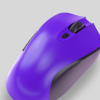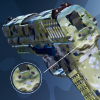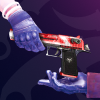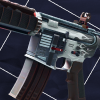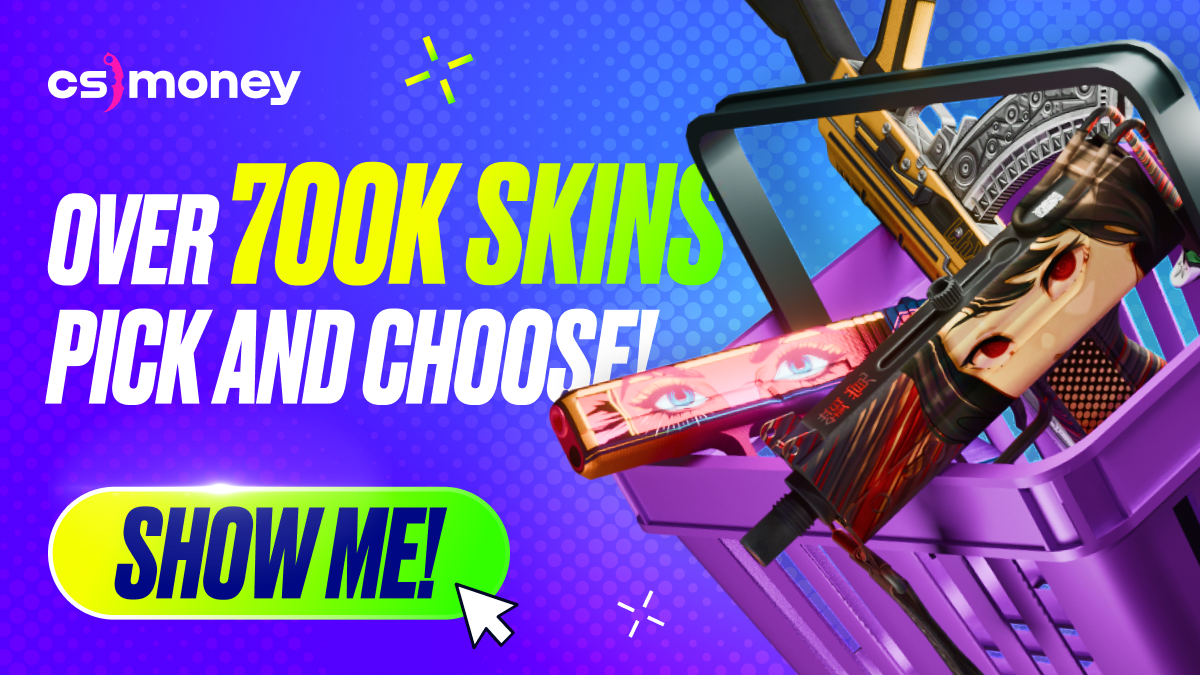Almost exactly ten years ago, Valve decided to change the game, not only literally, referring to CS:GO, but universally, the whole gaming industry, forever. On August 14, 2013, Counter-Strike Global Offensive received the Arms Deal update, introducing CS:GO Weapon Case: the first-ever; and a bit different from the rest. Today CS.MONEY Blog recalls the whole story of CS:GO’s first case, names skins from it, and explains how it affected the whole industry.
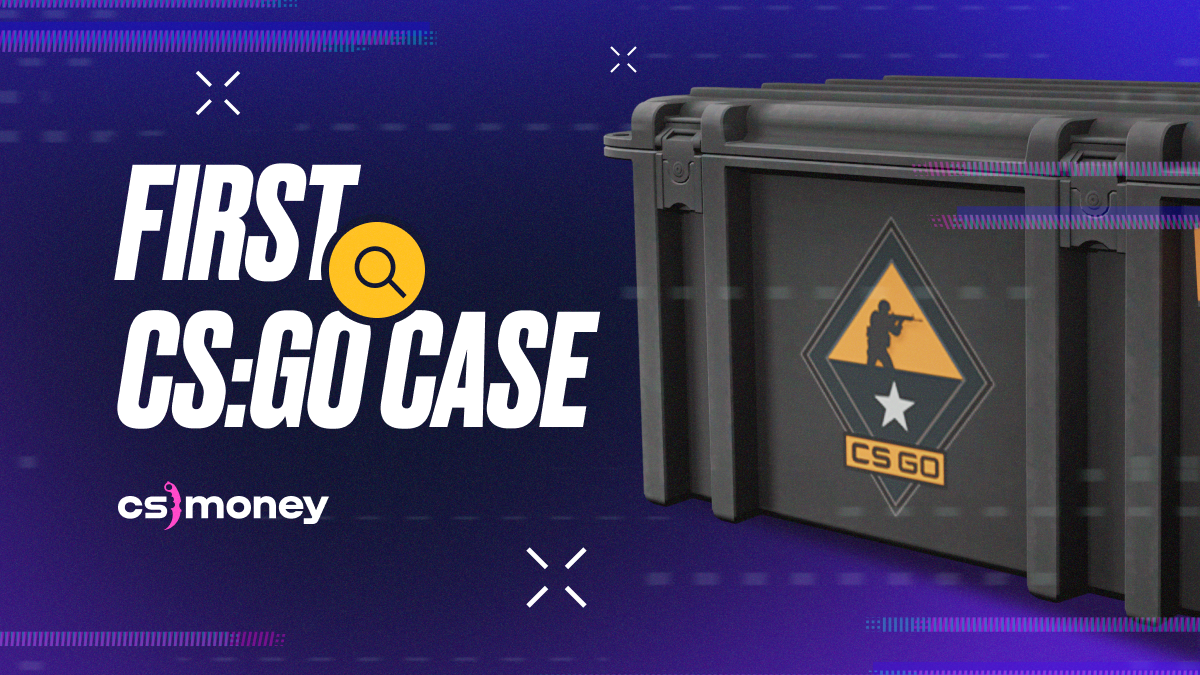
Meanwhile, CS2 is on its way! It will keep your old skins, but they will look completely different! The Era of New Skins is coming: visit our special CS2-dedicated page where you can compare old and new skins, as well as learn a lot of useful information about the new game.
CS:GO Weapon Case, the first case in the game, and its skins
By the release of CS:GO, Valve already had experience with in-game items. In Team Fortress 2, everyone has been collecting hats for several years. Therefore, it was only a matter of time before they started monetizing their soon-to-be-a-banger of a game. The development team approached this task from several angles. Ultimately, a decision was made: CS:GO weapons will have skins, and various knives will be introduced, too.
One year after the release of CS:GO, Valve releases first skins in CS:GO with its first case. Along with the map-tied collections, on August 14, 2013, CS:GO Weapon Case and eSports 2013 Case appeared in the game. This was the experimental attempt to monetize the game and keep players interested. Subsequently, it has grown into a multi-billion dollar virtual marketplace.
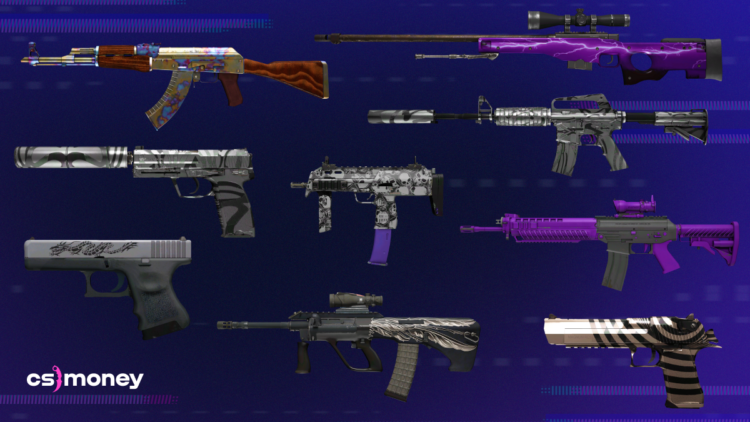
First CS:GO Weapon Case Skins
CS:GO Weapon Case has the following skins in it:
- AWP Lightning Strike
- AK-47 Case Hardened
- Desert Eagle Hypnotic
- Glock-18 Dragon Tattoo
- USP-S Dark Water
- M4A1-S Dark Water
- SG 553 Ultraviolet
- AUG Wings
- MP7 Skulls
Something’s odd, right? Yep. If you have opened a case at least once, you can notice that the list of skins from CS:GO Weapon Case is a bit short. And this is not the only difference between the first case and all the others. Let’s get into more details.
How CS:GO Weapon Case Differs From Other Cases?
Skins in CS:GO’s first case were relatively simple. The most obvious part is that they have a less intricate design compared to skins that are added to the game today. This… raw, unpolished charm that players liked. Interestingly, the developers believed that players would love camouflage skins, while bright ones would cause a controversial feeling.
And in order to protect themselves if the players suddenly hated colourful skins, Valve made them rare. Which is clearly seen with CS:GO Weapon Case 1. AWP Lightning Strike, a full-bright and eye-catching skin, is the rarest, while the camouflaged Dark Water drops much more often. No, it’s not a coincidence. Esports 2013 Case also drops M4A4 Faded Zebra much more frequently than AWP BOOM. But studies shown that players like bright skins, which brought to the fact that this became the principle of dividing skins: the brighter the skin, the higher its rarity.
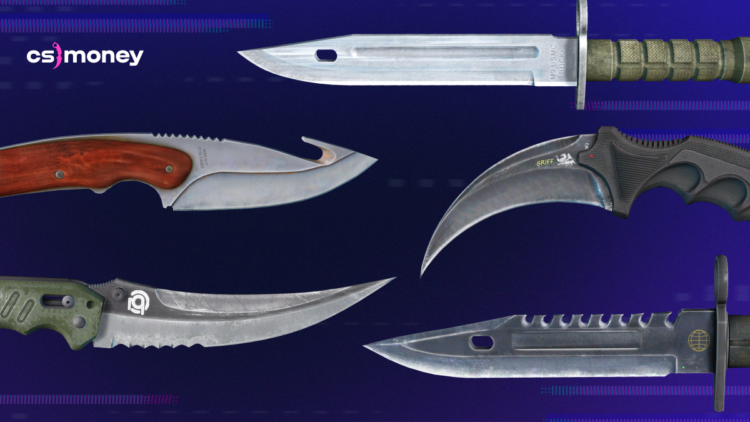
We’ve already mentioned that CS:GO Weapon Case has a modest set of skins, while modern cases have 17 skins for comparison. There, we had only nine. But here’s a very important and decent fact: CS:GO Weapon Case also brought the first knives: Bayonet, Flip Knife, Gut Knife, Karambit and M9 Bayonet. Now, ten years later, it is clear that the developers hit bullseye with almost everything: only Gut Knife is not that popular.
CS:GO Community Reacts To First Skins
Many old-school players initially found the idea of adding multi-coloured skins to CS:GO to be… frivolous. They said, Valve wanted only to profit from the game and kill its core competitive nature. For some, the already mentioned AWP BOOM was too bright and interfered with playing. But overall, people tend to underestimate things, as, for example, happened with the Molotov cocktail, too. At one time, the concept of incendiary grenades caused a real wave of terror and rage in the esports community.
However, players soon realized two things. Firstly, the skins look amazing and emphasize individuality. Therefore, playing with skins in CS:GO became a common thing. Basically, turning skins into digital versions of clothes/jewelry. Secondly, skins cost money. Traders realized that there was an opportunity to turn a collection of virtual items into real profit. So, the idea of investing into skins came to life.
Skins generated a wave of excitement about future.

Luckily or on purpose, with the first CS:GO case and its skins, Valve gave birth to the two most expensive skins of all time: AK-47 Case Hardened and Karambit Case Hardened. Rare patterns of these skins cost tens and hundreds of thousands of dollars. There’s a reason people buy cheap skins from CS:GO Weapon Case: they desire to craft AK-47 Case Hardened, at least the usual one. Thus, the high value and renown. By the way, the cheapest skin from the first CS:GO case is at least twenty dollars!
CS:GO’s first came as a surprise to the developers. Its popularity was enormous. Soon, the game became filled with skins. Valve added almost 240 skins before the end of 2013, and another 165 skins during 2014. Now, CS:GO can boast of more than 1000 skins of all kinds.
And it all started with a simple little case, which offered us just nine cute but clumsy skins and a pack of knives.




